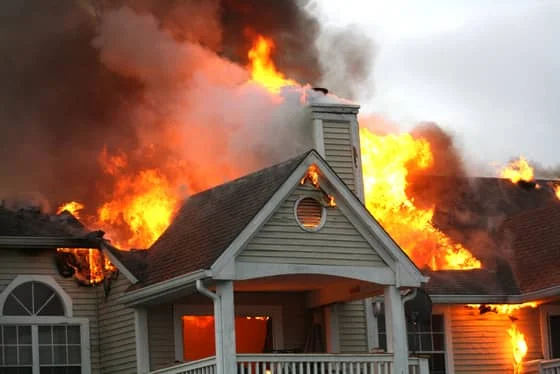Dealing with a fire-damaged property is an emotionally and practically challenging situation for any homeowner. When it comes to selling a house in Connecticut affected by fire, the complexities, including considerations such as how hot are house fires, can add layers of stress to an already difficult process. However, with the right knowledge and approach, selling your fire-damaged house can be a manageable and even positive step as you work towards a fresh start. In this comprehensive guide, we will walk you through the steps and considerations involved if you are a homeowner who wants to sell a fire-damaged house in Connecticut, ensuring you can make informed decisions every step of the way.
Assessing the Damage
The first thing to do when you’re looking to sell a fire-damaged house is to assess the extent of the damage. This is crucial not only for determining the overall condition of the property but also for transparently informing potential buyers.
It’s advisable to start with a thorough home inspection, preferably one that specializes in fire damage. The inspector can identify different levels of damage and help you categorize them as minor, moderate, or severe.
In Connecticut, the local building codes and regulations will play a significant role in what must be disclosed to potential buyers and what expenses will be incurred to bring the property into compliance.
Deciding: Repair or Sell
With the damage assessed, homeowners must now make a critical decision: repair the fire damages or sell the property as-is. Each option comes with its own set of considerations.
Investing in repairs can potentially increase the sale value of your home and allow you to recoup some of the investment you’ve made. While this might seem like the best plan, it also requires significant time and resources, especially for houses with extensive fire damage.
Repairing a fire-damaged home can be a lengthy process, involving permitting, construction, and inspection. It’s important to seek advice from professionals who have experience with fire damage repairs to ensure the process goes as smoothly as possible.
Alternatively, selling your fire-damaged house as-is can save you the time, money, and stress of making repairs. This option is particularly attractive to homeowners who would rather not deal with the complexities of fire damage restoration.
However, selling as-is does often mean a lower sale price compared to a similar property in good condition. The reduced cost can be a trade-off for potential buyers who may see an opportunity to invest in the property themselves or who have experience in restoring fire-damaged homes.
Selling Options
After deciding whether to repair or sell as-is, you’ll need to explore your selling options. Here are three of the most common routes to consider:
Direct Sale to Investors or Specialized Companies
A direct sale to a real estate investor or specialized company is perhaps the fastest way to sell a fire-damaged home. These professionals are experienced in dealing with damaged properties and may even prefer them for their investment portfolio.
The benefit of this route is the speed of the sale. Investors often have cash on hand and can close on a property quickly. However, be prepared to negotiate a lower price since the buyer will take on the risk of repairs.
Listing with a Real Estate Agent
Engaging a real estate agent familiar with the Connecticut market and experienced with fire-damaged homes can help you reach more potential buyers. Agents may have recommendations for cost-effective repairs, staging, and marketing strategies to showcase the property’s potential.
Selling through a real estate agent may take longer than direct sales but often yields a higher price. Your agent can also assist in properly disclosing the damage and legal obligations and ensure that the sale complies with all relevant Connecticut laws.
Auction
Auctions can be an effective way to sell a fire-damaged house in Connecticut quickly and at a fair market value. Potential buyers bid competitively, which can lead to a higher purchase price than a traditional listing.
However, auctions can come with hefty fees, and there are no guarantees on the final sale price. It is also essential to conduct the auction process fairly and transparently, in accordance with Connecticut’s auction laws and regulations.
Closing the Sale
Once you decide on a buyer and have negotiated the details, it’s time to close the sale. In Connecticut, closing typically involves a meeting where all necessary legal documents are signed, and the property is officially transferred to the new owner.
For a fire-damaged house, ensure documentation of damage, repairs, and compliance is complete. Having experienced professionals, such as attorneys or real estate agents, is essential.
Conclusion
Selling a fire-damaged house in Connecticut involves a nuanced and detailed process that requires thoughtful consideration and decision-making at every stage. From the initial assessment of the damage to choosing between repairing the property or selling it as-is, homeowners must weigh their options carefully. The sale itself can be approached through various avenues, including direct sale to investors, listing with a real estate agent, or opting for an auction, each with its own set of benefits and challenges. Ultimately, the goal is to ensure a smooth and compliant closing process, facilitated by experienced professionals who can guide you through the intricacies of legal documentation and regulatory compliance. By following the steps outlined in this guide, homeowners can navigate the complexities of selling a fire-damaged home in Connecticut with confidence, aiming for a sale that aligns with their personal and financial priorities.

